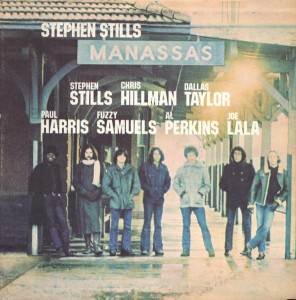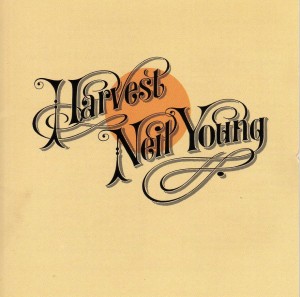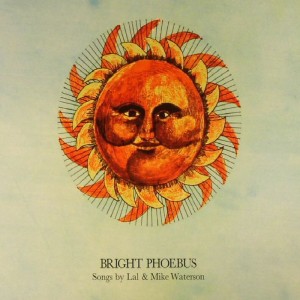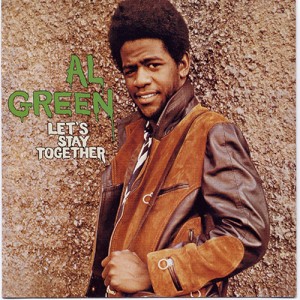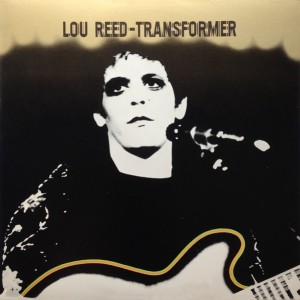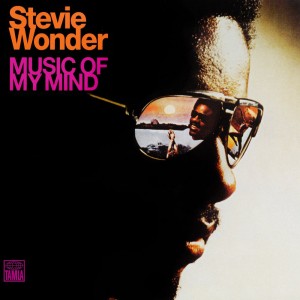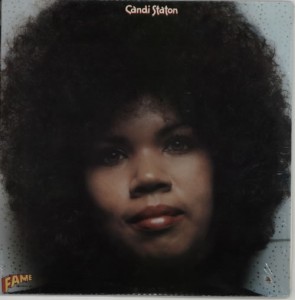For newcomers, I am journeying through my life my noting ten albums from every year of my life. This year: 1972 – Another very strong year (perhaps not as strong as ’71, though).
One problem that I have been facing here has been what to do when an artist has a particularly fertile flurry of releases. For instance, this year marks such a patch for two artists, Stevie Wonder and Al Green. Taking the latter, last year it took an act of total discipline not to include Green’s Hi debut, the awesome Gets Next to You. During ’72 he released two great albums Let’s Stay Together and I’m Still in Love With You and in ’73, he gave us what some call his finest work Call Me.
I have said before that what I want to avoid is writing the same thing over and over again, so I do not want to include every release in such a flurry. Noting that there have already been a few artists where exactly this problem has occurred (Black Sabbath, Curtis Mayfield, Funkadelic), I have decided to note explicitly when this is happening – just so people don’t think that I am neglecting great records inappropriately.
Stephen Stills (Manassas) – Manassas
You don’t hear too much about Stephen Stills anymore – at least I don’t. 1972 was about the end of a pretty incredible period of musical activity. In the 60s he was in Buffalo Springfield and wrote some of their greatest hits (along with Neil Young – see below), then he joined forces with David Crosby (see 1971) and Graham Nash (never my favourite) and Neil Young again with CSN(&Y). He produced a couple of solo LPs; the first spawning the monster hit (If You Can’t Be With the One You Love) Love The One You’re With. And then in 1972, there’s this. I think that he may have poured all that was left of his talent into this record, as it’s amazing, and nothing afterwards comes close. Shame.
Manassas lasted two albums but this is the one. In short it is Stills along with Chris Hillman (of the Byrds, Burrito Brothers) and a bunch of top-notch musicians from the West Coast rock scene. Stills throws everything at this record, and it should have been a massive shambles, but against the odds it works. As a double album with four sides, each side had it’s own mood and style; classic rock, Latin, folk-rock, country. And throughout it all it produces some monster tracks; Song of Love, Both of Us (Bound to Lose), So Begins The Task, Johnny’s Garden, Bound to Fall, The Treasure. If you want a measure of how great this record is, Bill Wyman of the Stones said that he would have left Mick and Keith and the lads and joined Manassas if asked. It’s probably best, all things considered that he wasn’t, but that’s a hell of a testament to how good Stills was in ’72.
War – The World is a Ghetto
This LA Soul/Funk/Latin band made a name for themselves by providing loose, extended improvised jams that reflected the serious talent of all seven members. Initially they had toured with Eric Burdon of The Animals, but they soon struck out without him, and as much as Burdon could be a fine vocalist, this was for the best. It enabled them to refine their sound and tighten up their songs. I can’t say that I have heard all of War’s albums but this one kicks ass. It opens with the monster, The Cisco Kid, free and deeply rhythmic with the most infectious sing-along lyrics. City Country City offers a 13 minute showcase for the whole band to stretch out and show off. However, it is the second side where the album hits the heights. Four Cornered Room is a seriously funky lament that could be straight off Funkadelic’s first album. It’s a heady mixture of smoke and blues and feeling. The title track rivals Donny Hathaway’s similarly titled classic, and has the same social consciousness that we see in Marvin Gaye’s What’s Going On? It is bright, funky, sweet and full of sadness and hope. It also features an incredible saxophone solo from Charles Miller. Beautiful! The album closes with the bizarre Beetles in the Bog which reminds me a little of some Rastafarian chant music (Ras Michael & Dadawah or African Head Charge from the Songs of Praise period). As odd as it is, it is infectious and hard to resist. A great record!
Jean-Claude Vannier – L’Enfant Assassin Des Mouches
You may recall Vannier from ’71, when we mentioned Gainsbourg’s Histoire De Melody Nelson. As the arranger, Vannier was a key part of what made that project so special. Here Vannier is in the driver’s seat and the result is total, unabashed insanity. Taking his lead from a short story proposed by Gainsbourg of a child who attempts to kill a fly and is later defeated by those flies (see the insert below), Vannier constructs the story. It is made up of noises, mad indescribable noises, sometimes for minutes at a time. But between those nightmarish visions are some of the coolest and out-there musical moments that you might find anywhere; some groove, some rock, some have a distinct circus feeling. It doesn’t matter, they’re all awesome. In addition, it has become incredibly influential – these are the templates for late-period Pulp, Beck, Air pretty much based their entire career of it.
In all honesty, this is not always the smoothest listen. It is insane. And while listening I asked myself whether this was as pleasant a listening experience as say, The Isley Brothers’ Brother, Brother, Brother, which has not made the cut. Truth is, no it isn’t. But while the Isley’s album is great – definitely recommended – it has a small fraction of the ideas of Vannier. If I was forced at gunpoint to give up one or the other, it’ll be the Isleys. Vannier is simply too interesting to let go.
Bill Withers – Still Bill
I almost included Withers’ first album, Just As I Am in my 1971 list. It is an incredible debut containing the classic Ain’t No Sunshine and the beautiful tribute Grandma’s Hands. (Side note: It was produced by Booker T and featured lead guitar by Stephen Stills – further confirming the latter’s great final years.) It was a great album in a great year and I was sad not to include it. But perhaps it was for the best as it leaves this possibly stronger follow up space in 1972. This time, it contains three cast-iron monsters: the uplifting Lean on Me, the deep groove of the paranoid Who Is He (And What is He To You?), and the funky Use Me which has been covered almost as often as Sunshine.
What is so cool about Withers is how he is so funky while being so incredibly restrained. While our typical mental image of a soul singer is somewhat sweaty (think James Brown, Otis, Isaac Hayes or Barry White), even in the midst of a track as danceable as Use Me, it is inconceivable that Withers has even a hair out of place – he is that unflappable. As an album every track is cool, like sunset on a summer’s evening – there’s no rush, no hustle, but there’s no sitting still either. It is grooves so deep – check out Kissin’ My Love with it’s sampleable guitar lines and subtle arrangements. Withers’ discography continues in this vein over the next few years: ’73 brings Live at Carnegie Hall which underlines the genius of these two albums, and +Justments continues the groove present here in ’74. Genius!
Neil Young – Harvest
Neil Young has been a mainstay of American rock it’s hard to imagine a time when he wasn’t important. It’s incredible to think that in 1972, Young had been around for six years and that during that time he had formed Buffalo Springfield with Stephen Stills and Richie Furay – one of the finest West Coast groups of the 60s, released an album with Crosby, Stills and Nash – one of the biggest selling records in rock music history, and released four albums. Not one of them were slouches; each record had it’s own character and contain enough classics to be safe for credit and royalties for the rest of his life. And then, Harvest, which is possibly his best record. I say possibly because there are other contenders. Anyway, it’s safe to say that Young sits in the rarified company of Dylan and maybe one or two others: Bowie, the Stones, Leonard Cohen perhaps.
Harvest is magnificent but in a very relaxed, downhome sort of way. None of the songs feel urgent or visceral. While it is safe to say that Young is never really content with the world – there’s always something to be dissatisfied about – nonetheless, this record is a relatively easy listen. It is one of Young’s most country records, every song is embellished by steel guitar.
Anyway, if you’ve stuck with me this far you probably know this record as well as I do. If not, and you’re still with me, please rectify this as soon as possible. Not one song is wasted, every one is gorgeous. Virtually every song here is, or should be, part of the Classic Rock canon; A Man Needs a Maid, Heart of Gold, Old Man, Alabama, The Needle and the Damage Done.
Lal & Mike Waterson – Bright Phoebus
This is a very late addition to the list of 1972 albums. While it was originally released in that year, it very quickly disappeared and only received a CD release earlier this year. A little context is necessary: The Watersons were the first family of the ‘60s folk revival. They had made a name for themselves in creating very pure, very faithful reproductions of the British folk traditions. Their style was stark and unadorned by anything that could be described as modern, singing as they did songs that dated back decades, if not centuries, and singing without instrumentation, they sound like the recordings themselves may date back that far too. So when Lal & Mike released this album of new songs with ‘new’ instrumentation (I placed new in inverted commas there because there is nothing that might strike us as modern), it was viewed as something like a betrayal.
The second thing I should note before I really dig in is to say something about Lal & Mike – their voices are as stark as the songs, fully embodying the North East; cold, stern, bitter, devoid of obvious signs of warmth. The production, even when adorned by sympathetic arrangement, still pushes the vocals up front. There is something very Nico-like about this, where the voices are strong and imposing and forcing themselves upon all else.
But then, the songs. While they fit into two broad types; the jaunty and the not, the lyrics maintains the subject matter of the traditional materials; nature, death, despair, isolation. Danny Rose is, to the ears, a light rock’n’roll style number and is possibly the most upbeat here, is about a violent thief who stole a car, crashed it and died in the subsequent explosion. The Magical Man is again jaunty, apparently celebrating a mysterious magician. Closer looking at the lyrics suggests something sinister.
But then, the stars of the show are the ballads sung by Lal. The combination of her deep sonorous voice, foreboding and the solo guitar and light-touch arrangement of strings is honestly spine-chilling. To Make You Stay sings a song of abandonment. Never the Same tells a horrifying story Rosemary’s death on the hillside.
But Johnny can’t play no more, Rosemary’s lying in a shower of rain.
If we live another day, We’ll never be the same again.
The album closes on the title track, which refers to the sun. While it is, ostensibly, a happy song – it is lovely when the sun comes out for the first time – there’s something a little Wicker Man about it. And here we find another striking parallel – a picture of an England gone by brought into contact with (1970s) modernity producing something both beautiful and a little unsettling.
Al Green – Let’s Stay Together
Along with Bill Withers, The Reverend Al Green almost appeared last year. Again, like Withers, he could easily show up next year too. Both artists had incredible periods during this time (see my introduction). Obviously, this album has the outstanding title track – a staple of wedding discos. Quite rightly (full disclosure: it was Bella and my first dance at our wedding), it is beautiful; soulful and uplifting and has that easy warmth that Green is known for. It is also massive. I don’t know anyone that does not have at least a deep regard for that track. And this song alone would be enough to make the album necessary. However, what ensures its inclusion on this list is the eight songs that follow. Not one disappoints is could be described as optional. Not a single one!
La-La For You is smooth Southern soul of the highest order. Remember! Al Green was recording with Willie Mitchell’s Hi Records at it’s finest point. Mitchell was a genius producer. His band was the shit! It’s not for nothing that bands and artists up to the present has headed to Memphis to record with these guys, even to the present day. Anyway, track three So You’re Leaving drives and pulsated – no-one could leave this song. You get the picture? Every song is a masterclass of early 70s Southern Soul. It is the perfect blend of smooth and grit.
Lou Reed – Transformer
So I was at my friend’s house not so long ago and he put on some Lou Reed (this album as it happens), and I admitted that I have never really gotten on with him very well. I love the Velvet Underground without question, but a little like the John/Paul debate post-Beatles, I again dug John over Lou (see next year for Cale’s eventual arrival to these lists). But the exception is this album, of course. The ‘of course’ is mandatory. Any album with Vicious, Perfect Day, Satellite of Love and, of course, Walk on the Wild Side is somewhat obligatory. I still remember the first time I heard Wild Side – it was a café or restaurant or bar in Jersey. I was holidaying with my mother and her friend and I was around 13. It was on the juke box and I must have put it on half a dozen times (the spare change no doubt a ploy of my mother’s to keep me distracted). I don’t think I realised how transgressive the song is – not least because the other song I fixated on that night was Gloria by Laura Branigan. It was many years until I found out that that song was a gay disco anthem.
So, Transformer. It has the classics listed above and it was produced by David Bowie – you can hear him in the background along with Mick Ronson. It also has 8 other songs that are also excellent and do what Lou Reed songs do best – capture snippets of life, romanticise them or de-romanticise them (depending on what is appropriate), or at the very least offer three minute reasons to still love rock music. If you only listen to one Lou Reed album – make it Transformer.
Terry Callier – What Color is Love?
Where to put Terry Callier? He exists in the nexus between folk, jazz, soul and funk along with people like Nina Simone, Gil Scott-Heron or Richie Havens. Picking up different albums may be more this or that. His early 60s albums are more folk, for instance. Like so many of these guys he has a great story that I encourage you to check out (once you’ve caught his records, of course!). He was supported and encouraged by the legendary Charles Stepney of Chess records and this album is typical Stepney; it is jazzy, funky and lush with incredible arrangements. (Also check out Minnie Riperton, or The Dells 70’s output.)
The album here is exemplified by two tracks: the opener Dancing Girl and the funky You Goin’ Miss Your Candyman. Both of these tracks are extended workouts that show the breadth of both Callier and Stepney. The former begins so delicately with a light filigree guitar and chimes. Callier sings of dreams and we seem to be slipping into an out of body experience. The dancing girl of his dreams leads Callier into a meditation of the music as two minutes in all breaks down and a light but persistent groove takes over, Callier referencing Hathaway, Charlie Parker. As a piece it soars – reflecting the healing, transformative powers of music, as the grooves becomes more persistent again at 5 minutes. Callier lets go and vocalises freely as the horns and strings swirl around him. It has the freedom of jazz, but the groove and constraints of 70s soul music. Candyman is more contained, more funky – holding a heavy bassline down accompanied by propulsive percussion. It just pushes onward and onward. If you don’t want to move, you’re dead – I’m sorry to break it to you so bluntly.
I have focused on these two tracks, but the truth is that I could have written about any of the seven here just as effusively. Some are ballads, some are almost poetry. The album closes with the lush, smooth, lovely You Don’t Care. I’ve never been more conflicted. I care deeply. But it’s so pretty.
David Bowie – The Rise and Fall of Ziggy Stardust and the Spiders from Mars
Hunky Dory was amazing but the step between that album and this is incredible. In truth, it took me a long time to see it. From first listen, I loved Ziggy and appreciated it but it was a good while before I saw the progression involved and how sophisticated a record it was. I don’t know why – I think that other Bowie records just sung out more to me than others. I remember sitting on the bus listening to Moonage Daydream, and the structure, the production, the lyrics and simply being blown away by it all. From the opening bursts of guitar, to the immediate restraint, to the chorus, to the jittery title – all within the first minute and nothing is wrong or out and all with deeply signifying lyrics. And as the song progresses the arrangement becomes more and more complex. And Ronson’s guitar solo! It is unbelievably beautiful. I love Hunky Dory like mad – but nothing on it comes close to this one song!
And the rest of the album maintains this exceptional standard. The opener Five Years is theatrical in all the best ways, as is the closer Rock’n’Roll Suicide. The title track is iconic. It is easy to see why Bowie’s performance of Starman on Top of the Pops was held like an epiphany to a future generation of artists, musicians and writers (many of whom are likely to appear in future posts of these lists). Not one song is filler, not one song is wasted. Every song invites you to either sing along or listen closely.
In writing these posts I have shied away from making any excessive claims about the records I have chosen. I do not propose that they are the best records of their respective years, just interesting or worthy. They may be my favourites but I am not even sure how much I want to commit to that. Some of the albums that slip off the lists might have made them on another day. But this record is within a very decent shout of being the best of 1972. It is that good.
And also…
It’s been an incredible year for Stevie Wonder. He produced his wife, Syreeta’s eponymous album, which is lovely. But on top of that he released two astonishing records, Music of my Mind and the amazing Talking Book. The latter was comfortably in the top ten, but I am going to hold off commenting until next year and Innervisions, which just about tops it – even though it doesn’t have Superstition on it.
And nearly…
Aretha Franklin – Young, Gifted and Black Her last great LP – more upbeat than Spirit in the Dark but a multi-faceted monster of an album. (If you want to know why, check out ‘Rocksteady’- Wowzer!) Curtis Mayfield – Superfly A real contender along with his debut (1970) for the best in a very rich career. Along with the classic title track, we have Pusherman and Freddie’s Dead – both monsters. Without doubt my favourite soundtrack ever. The Staple Singers – Bealtitude… Big Star – #1 Record… Candi Staton – Candi Staton
